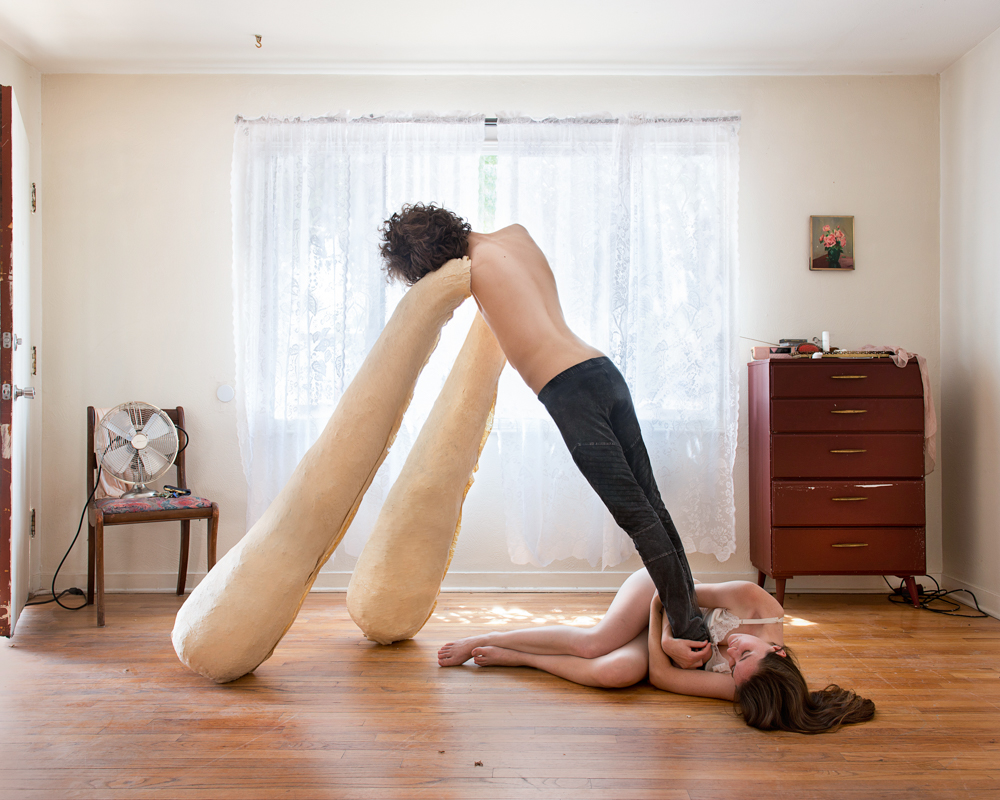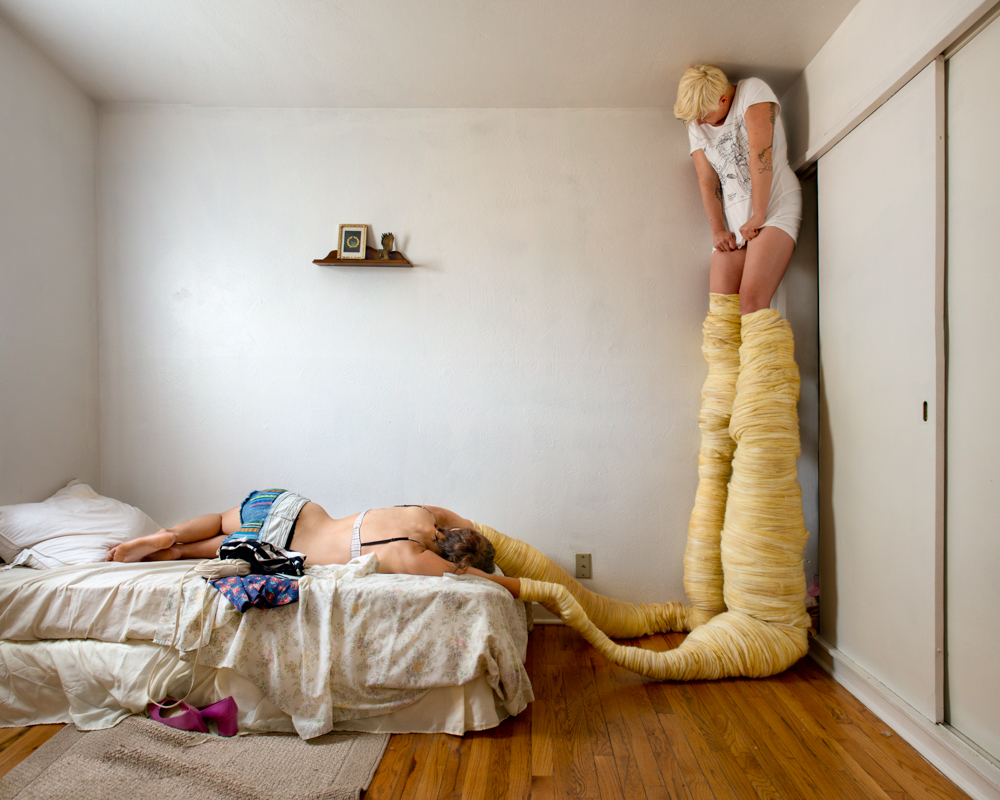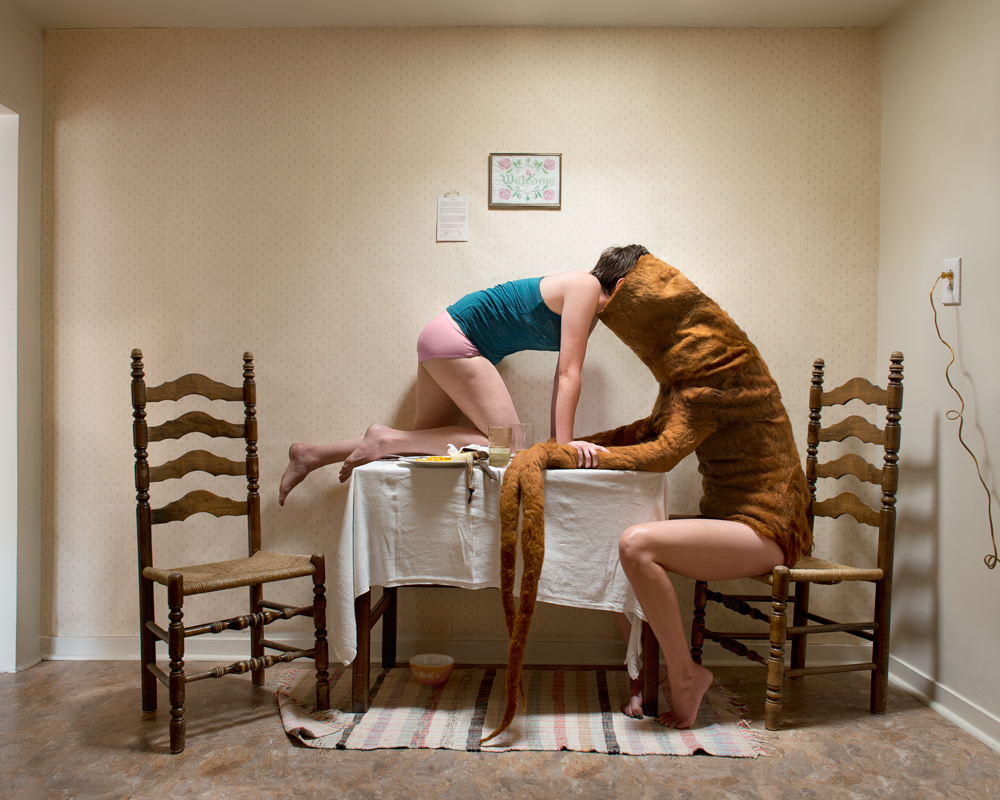Photography + Form Week: Jennifer B. Thoreson
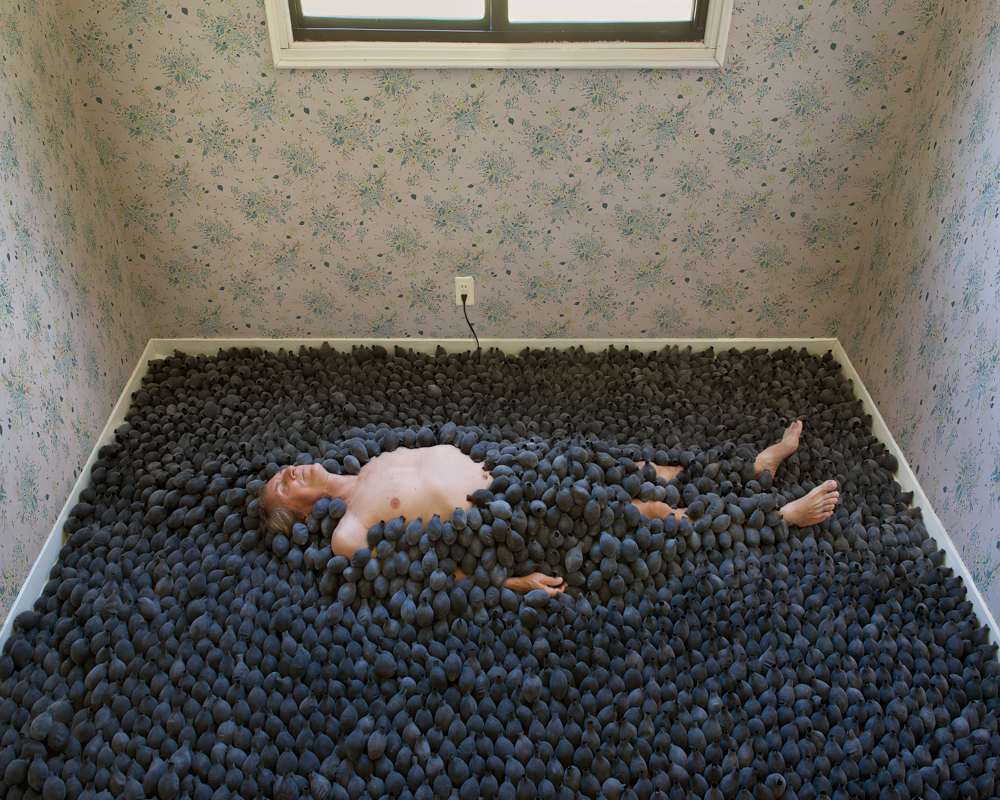
© Jennifer B. Thoreson, Burial, from the series Testament, 16×20 inches, pigment ink on fiber rag, 2014
Photography is my first love, but at times I feel that it falls flat for me (how ironic) and I seek out other ways that may tell the story more effectively. While researching for my own photo based projects, I often come across the work of others who push the medium far into new corners through the use of textiles, thread and sculptural elements or any combination thereof. Due to the saturation of images, it seems that some artists have been less inclined to use photography as a language but rather as a form to recreate objects such as textiles, 3-dimensions or a combination of both. The artists featured this week are all inspired by imagery or choose to create sculptural elements with in their imagery to create a layered investigation of their worlds -Maggie Meiners
I was just recently introduced to Jennifer B. Thoreson’s work and was blown away but not only her photographs, but also her highly detailed process and creations. Intricately staged and constructed and using fabricated objects, site-specific installations and sculptures in her work Jennifer’s work references her Faith, domestic life, human relationships and anxiety. The level of detail and use of materials in each body of work is incredibly dynamic and remarkable. I was really eager to learn more through her response to the interview questions.
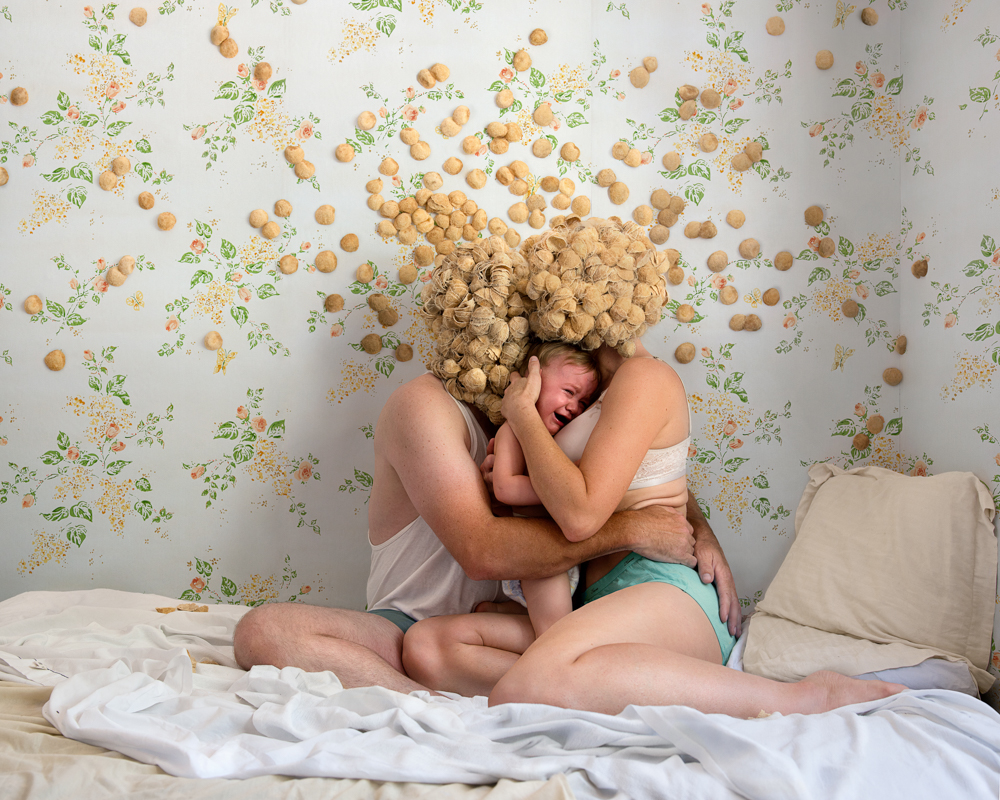
© Jennifer B. Thoreson, Little Baby, from the series Testament, 16×20 inches, pigment ink on fiber rag, 2014
Jennifer B. Thoreson (B. 1979, Weatherford, Texas, USA) is a multidisciplinary artist, teacher, lecturer, and mother of two boys who lives and works in Albuquerque, NM. She holds an MFA from the University of New Mexico. Her work is heavily metaphorical, and delves into the nuances of human relationships, human fragility, and the ephemeral, temporary nature of human life. Through her exploration of questions surrounding faith and religious practices, she critically conceptualizes different themes to produce images rich in allegory, engaging with her viewers as they question and explore the themes for themselves. The complexity of her work is rooted in her practice. She carefully orchestrates each image by manipulating symbolic materials, constructing site specific installations and sculptures, and meticulously staging every scene to imbue each element, from the smallest to the largest, with meaning and significance. The elements and spaces she fabricates and captures in her images play as important a role in her art as the finished photographs themselves.
Jennifer’s work has gained an international audience through inclusion in museum and gallery exhibitions, spanning the United States, Canada, Mexico, Brazil, China, Russia, Australia, France, Switzerland, Lithuania, and the United Kingdom. Her work is held in museum collections at the Museum of Fine Arts, Houston, and has been shown in numerous solo and group exhibitions, including at the Houston Center for Photography, the Blue Sky Gallery, Portland, OR, the Museum of Contemporary Art, Jacksonville, FL, and the Musee de l’Elysee, Lausanne, Switzerland. In addition, her work has been published worldwide in well-known publications, including Black and White Magazine, Diffusion Magazine, and Installation Magazine. In 2011, a monograph of her work, entitled Medic, was published. Awards include Photo Star Award (Kaunas, Lithuania); International Center of Photography (ICP) Leadership Medallion; Photolucida Book Prize, Residency at the Santa Fe Art Institute, and the Howard Franks Memorial Grant.
Follow Jennifer Thoreson on Instagram: @jenniferthoresonart

© Jennifer B. Thoreson, Father Daughter, from the series Testament, 16×20 inches, pigment ink on fiber rag, 2014
I was raised in a devout Southern Baptist household in rural Texas. My family’s belief system was the firm, unwavering foundation of our home; every aspect of daily life was rooted in our faith. As a child, I was unusually tuned in to the suffering of those in bible stories–the violence, emotional trauma, and physical pain people endured. As I matured, I began to keenly observe and internalize the suffering of those around me, particularly those within my church. I was profoundly interested in how people processed and survived trauma and grief, and how gracefully they endured emotional pain. Even now, I tend to bury myself in the suffering of others; I am often empathetic to a fault. Matthew 11:28 reads: ‘Come to Me, all who are weary and heavy laden, and I will give you rest.’ To this day, this verse both comforts me and haunts me. I find hope woven into it, but also frustration and unfeasibility. I suffer from anxiety and find it nearly impossible to lay my own burdens down. In this work, I am probing into these furtive areas, investigating the management of pain in relationship to faith and deeply rooted belief systems.
To create the work, I sought out and rented a small house, and worked exclusively within it over the course of one year. The house itself is a direct reference to the home I grew up in; I wanted to re- activate and re-imagine the space where my understanding of faith is rooted. For each photograph, I fabricated site-specific installations and sculptures using biblically symbolic materials such as sheep’s wool, clay, and human hair. All twelve photographs are intricately staged and constructed within the rooms of the house, together with human subjects and sentimental objects from my 1980’s childhood home. – Jennifer B. Thoreson
Tell us about the landscape of your childhood and how you came to be an artist.
I was raised in a devout Christian home in a rural Texas. Nearly all of my work is rooted there, pushing on the edges of my religious upbringing, probing into the evolution of my beliefs and posing new questions about them.
I was very fortunate to grow up in a home with two creatives for parents. My father is a musician and a gifted teacher, he taught music middle and high-school students for many years, and still directs music at church in his retirement. I think what affected me most is witnessing how music affects him—it casts a spell you can see evidenced even in his face and hands; it’s transformative. I found myself searching for that experience, I wanted to be moved and stirred by something the way he is by music. I pursued music, to the extent of an undergraduate degree in clarinet music performance. While there were plenty of inspiring moments, I knew by the time I graduated that music wasn’t the right source for me, I felt as if the well had dried up. My mother taught primary school, though her heart was really at home with my brother and me. It was her who lent me a sense of whimsy and playfulness, free experimentation, and invention. I was a maker from the get-go, and she facilitated and encouraged my efforts, even when that meant cutting apart dolls and reassembling them in new ways, painting on my clothes and shoes, making endless mud sculptures and burying her good silverware in the back yard. I was formally introduced to photography in a high school photojournalism class, which led me to an elective art photography course in undergrad. It was there that all the elements met (or collided, really.) I found an insatiable curiosity and total captivation in the language of visual art.

© Jennifer B. Thoreson, Hair Cloak, from the series Testament, 16×20 inches, pigment ink on fiber rag, 2014
What was your first meaningful encounter with art?
It’s a funny story really. In third grade my class was bussed to the Kimbell Art Museum in Fort Worth, Texas. Out front of the museum are two massive reflecting pools, which proved irresistible to me, as I promptly stepped out of line and into one of them, happily wading in the water just past my knees. Two other kids immediately followed suit, to the horror of the teachers tasked with keeping us in order. After nearly an hour outside, we three were deemed sufficiently dry and were permitted to attend the end of the museum tour. Theodore Gericault’s Portrait Study of a Youth was on display that day, and I stood in front of it as long as for the staff would let me. I had enough money to buy a post card of it, which I still have. I tried—hundreds of times, to draw and paint the boy’s face, even years later, in high school. That early experience of being magnetically drawn to this painting, and later, others that were portraits or figurative pieces eventually was a sort of cornerstone for my practice, which relies on the human figure and visceral expression.
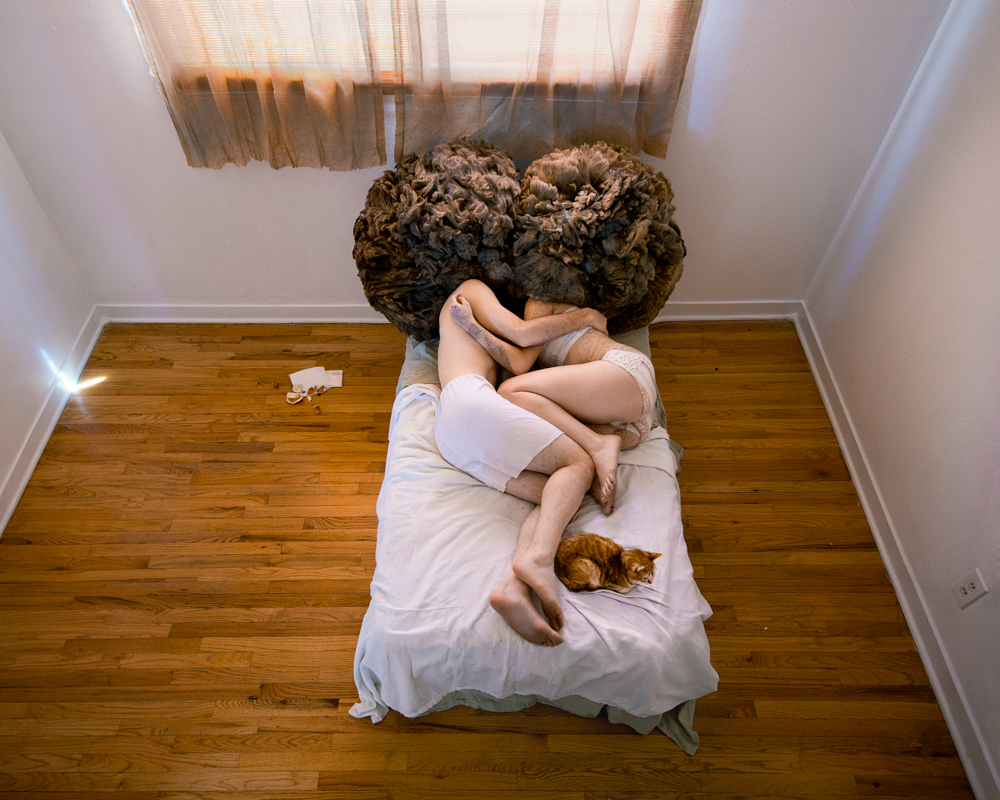
© Jennifer B. Thoreson, Soulmates, from the series Testament, 16×20 inches, pigment ink on fiber rag, 2014
How does photography influence/inform this body of work and vice versa?
Though the majority of my time is spent fabricating objects and sculptures, the photographic process is still the backbone of my practice. I love the control that photography allows. The objects I make are for the camera—I have ultimate command of how the sculpture is perceived, in shape, perspective, dimension, texture, and space. While the photographs are heavily staged, I’m allowed to witness and record these documentary moments, discoveries that happen when a person interacts with a sculpture and is changed by it. A photograph seizes that, and I have the privilege of choosing that private moment and allowing it to be translated to a viewer. I’m excited by the relationships formed by the surreal scenarios and the element of truth in photography, that the photographs are records of events and authentic experiences, all filtered through my own very specific perspective. In a way, the sculptures are reduced to a photograph—sort of hyper-concentrated and boiled down into one meticulously structured article of evidence.
What process is used in deciding which materials to use when it comes to taking it from straight photography to something of another dimension?
I think a lot of what I love about this process is the idea that it really is still straight photography. All of the surrealism and other worldliness is in the construction of the sculptures, the sets, and in the performative aspects. The photographs are meticulously constructed and hyper-controlled, but very minimally manipulated. I adjust tonality for printing, but I’m not adding content post-production or compositing images. That is an important part of the process for me conceptually, that the photograph is a true document of an authentic place and interaction. There is truth in it, but not the whole truth. That’s thrilling to me; I’m still so hopelessly in love with photography.

© Jennifer B. Thoreson, Cocoon, from the series Testament, 16×20 inches, pigment ink on fiber rag, 2014
What were you reading, watching or listening to while making this work? What pieces of literature, art or film may have helped direct this work?
I was in graduate school while working on Testament, it was my thesis project. I was reading a lot of assigned Art History texts and critical writing on other artists. I still spend most of my research and development time deeply researching other artists, especially contemporary artists. I love being in someone’s head for a bit and trying to unpack their process, and how it results in the things that they make. I also love books on symbolism and metaphor, especially religious symbolism throughout the history of art. I often read religious texts for reference and insight too.
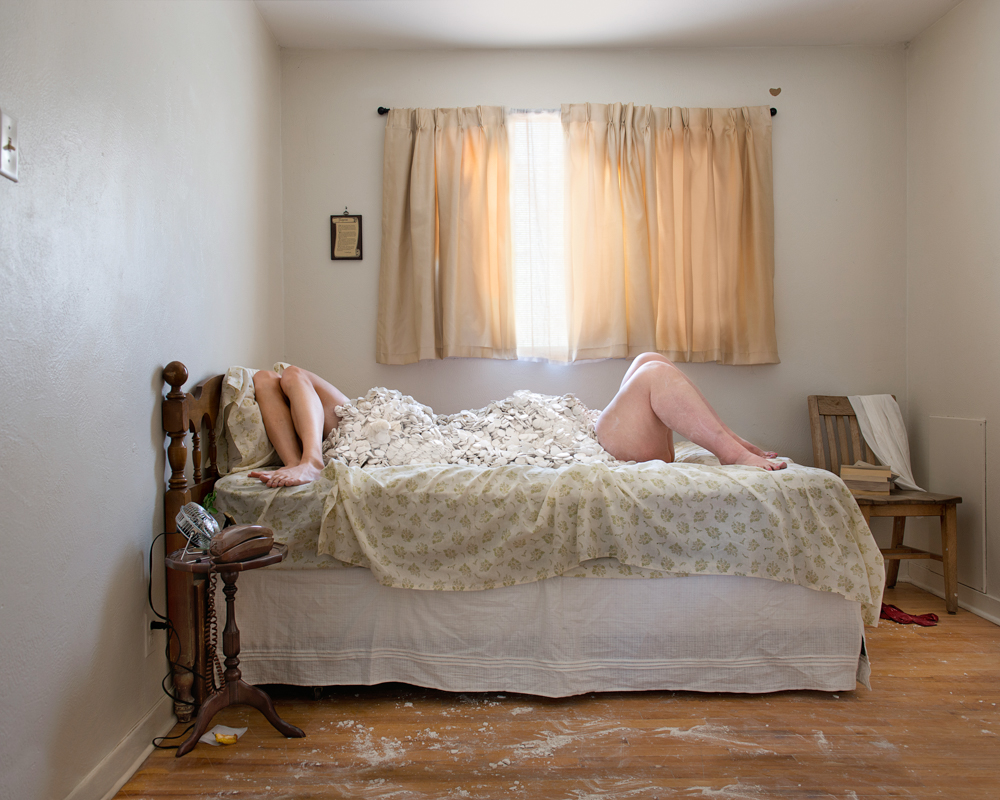
© Jennifer B. Thoreson, White Mass, from the series Testament, 16×20 inches, pigment ink on fiber rag, 2014
What are you working on currently? Does it relate to photography? If so, how?
In May of 2021, I published a public invitation on social media, asking people of all faiths, beliefs, and affiliations to contribute one pair of gloves to a collaborative work of art that explores the act of prayer. Their task is to carve out time to sit with a pair of white cotton gloves and mark them with red paint as they form a prayer or affirmation for Caspian, a five year-old boy living in New Mexico who suffers from severe seizures. The mark-making process is like a moving meditation, and allows spoken words and rituals to become evidenced, as if a prayer could occupy physical space.

© Jennifer B. Thoreson, Cancer, from the series Testament, 16×20 inches, pigment ink on fiber rag, 2014
To date, I have received by mail nearly 2000 gloves from people all over the world, representing eleven countries on four continents, and an astonishing assortment of cultures and beliefs.
Once gloves are received in the studio, they undergo a careful and meticulous transformation. Each glove is counted and matched, then washed, mordanted, and hand-dyed using pigments derived from botanical Madder Root. The dye is ancient and medicinal and lends a richly symbolic transformation of the white fabric to a rusty-red. Gloves are then dried, shaped over wooden molds, and cast with starch, creating lifelike gesture and rigid form.
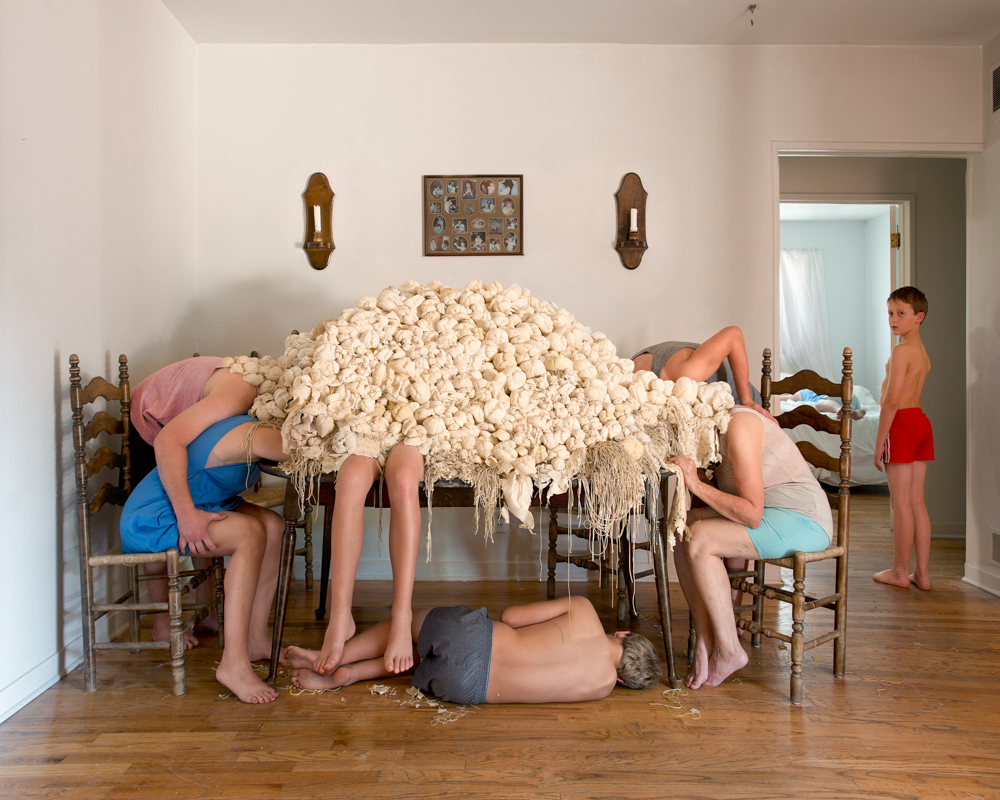
© Jennifer B. Thoreson, Family Portrait, from the series Testament, 16×20 inches, pigment ink on fiber rag, 2014
I recently secured a historic adobe chapel in Santa Fe, New Mexico for the installation and photography of this piece. Once all gloves are prepared, I will create a temporary installation, suspending an undulating mass of gloves and hundreds of brass shepherds’ bells from the ceiling using wool yarn, which will hover over a floor covered in powdery white ash. Caspian and his family will be invited to walk among the gloves and hear the ringing of the bells, representing the hands and voices of each person who offered prayer for them. The final work will be realized as a photograph of Caspian inside the installation. Once the photograph is made, the installation will be deconstructed, and all pieces recycled or repurposed. Gloves will be washed and made into soft cloth again, cut into yarn, and woven into a large prayer rug to accompany the photograph in exhibition.
Posts on Lenscratch may not be reproduced without the permission of the Lenscratch staff and the photographer.
Recommended
-
Salua Ares: Absense as FormNovember 29th, 2025
-
Ricardo Miguel Hernández: When the memory turns to dust and Beyond PainNovember 28th, 2025
-
Pamela Landau Connolly: Columbus DriveNovember 26th, 2025
-
KELIY ANDERSON-STALEY: Wilderness No longer at the Edge of ThingsNovember 19th, 2025
-
Jackie Mulder: Thought TrailsNovember 18th, 2025

